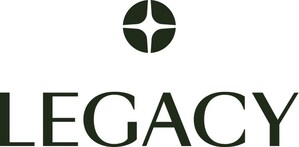Statement from Legacy® President and CEO, Cheryl G. Healton, DrPH, Regarding the December 19, 2012 Monitoring the Future Survey Findings
WASHINGTON, Dec. 19, 2012 /PRNewswire-USNewswire/ -- New data released today from the University of Michigan's Monitoring the Future study shows a continued decline in teen smoking rates in 2012. The survey found that smoking rates fell for all three of the grade levels studied – grades 8, 10 and 12. The decline—from 11.7 percent to 10.6 percent— was a statistically significant drop. Further, the proportion of students who have ever tried smoking has fallen dramatically, with a two-thirds drop in smoking initiation over the past 16 years among 8th graders.
(Logo: http://photos.prnewswire.com/prnh/20101101/DC86294LOGO)
Many smokers begin smoking in adolescence, and more than 400,000 Americans are estimated to die prematurely each year as a result of smoking. The survey also measures several other kinds of tobacco delivery products, which the industry continues to introduce and market to youth. As stated by former Legacy Board Member, Howard K. Koh, M.D., M.P.H., Assistant Secretary for Health for the U.S. Department of Health and Human Services, "We are very encouraged by the marked declines in tobacco use among youth. However, the documented use of non–cigarette tobacco products continues to be a concern." For example, today's data shows that for 12th-graders, past year use of small cigars was reported at nearly 20 percent and annual hookah water pipe use was 18.3 percent.
The survey shows encouraging signs that youth perceptions around smoking have shifted dramatically since the mid-1990s, when perceived risk was at its lowest levels. Nearly two-thirds of 8th graders and about three-quarters of 10th and 12th graders say that they see a great risk of harm from daily smoking. The percentages of 2012 teens who say that they personally disapprove of smoking are also at the highest levels seen since the inception of the study. Additional attitudinal changes include: increases in teens preferring to date nonsmokers; a strong dislike for being around people who are smoking; the perception that becoming a smoker reflects poor judgment, and the belief that smoking is a dirty habit.
Study investigators suggest that the 2009 increase in the federal tax on tobacco products might be a contributing factor to this recent decline in smoking within this age group. Today's findings assure public health groups that there is continued progress towards declines in teen smoking, but there is still a need for action and leadership on this issue – a plea also made by the Surgeon General herself in the release of the March 2012 Surgeon General's report on youth smoking. Additionally, Lloyd Johnston, the principal investigator of the Monitoring the Future study, remarked that future progress toward eradicating youth smoking is dependent on several factors, including "bringing back broad-based anti-smoking ad campaigns."
We agree with Mr. Johnston's nod to the success of the continued efforts of tobacco control and public health groups in this ongoing fight. Proven-effective prevention campaigns, like the truth® youth smoking prevention campaign and successful efforts at the state and local levels, are needed to engage with young people during the critical years when they are most likely to experiment with tobacco. Now in its 13th year, the truth campaign continues to evolve and change to ensure it reaches its target audience, and stays relevant. Just this past year alone, the campaign expanded its touring schedule, launched its first-ever college tour, reached new audiences through a mobile game and gaming events, and boosted its online and digital outreach efforts. All of these efforts are geared toward reaching teens and young people through channels, events and messaging that are relevant to their daily lives and activities.
We again urge the U.S. Food and Drug Administration to act swiftly and boldly in regulating tobacco products per the 2009 Family Smoking Prevention and Tobacco Control Act; menthol cigarettes should be banned and cigars and cigarillos need to be regulated before they increase in prevalence among this age group. Importantly, smokers need help in quitting. We need to continue to encourage use of evidence-based, quit smoking programs, including free online resources like our program BecomeAnEX.org. Together, these efforts can keep us moving on a positive track for years to come.
The tobacco-related findings of the 2012 Monitoring the Future survey can be found at http://www.monitoringthefuture.org/data/12data.html#2012data-cigs.
Legacy helps people live longer, healthier lives by building a world where young people reject tobacco and anyone can quit. Legacy's proven-effective and nationally recognized public education programs include truth®, the national youth smoking prevention campaign that has been cited as contributing to significant declines in youth smoking; EX®, an innovative public health program designed to speak to smokers in their own language and change the way they approach quitting; and research initiatives exploring the causes, consequences and approaches to reducing tobacco use. Located in Washington, D.C., the foundation was created as a result of the November 1998 Master Settlement Agreement (MSA) reached between attorneys general from 46 states, five U.S. territories and the tobacco industry. To learn more about Legacy's life-saving programs, visit www.LegacyForHealth.org.
Follow us on Twitter @legacyforhealth and Facebook www.Facebook.com/Legacy.
SOURCE Legacy
WANT YOUR COMPANY'S NEWS FEATURED ON PRNEWSWIRE.COM?
Newsrooms &
Influencers
Digital Media
Outlets
Journalists
Opted In





Share this article